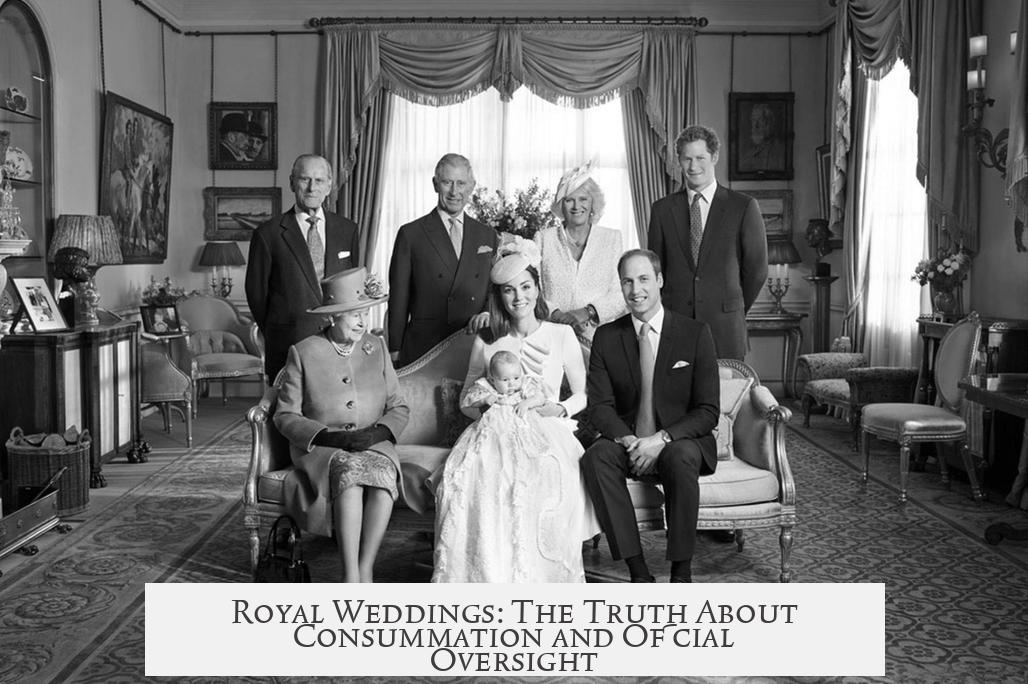Yes, it is true that sometimes after the wedding of a noble or royal couple, officials or witnesses would oversee the consummation of the marriage. This practice, especially prominent in medieval and early modern Europe, served a legal and political purpose. Such marriages were rarely about personal affection. Instead, they functioned as political contracts aimed at securing alliances, wealth, and heirs.
The presence of witnesses or officials ensured that the marriage was consummated, which was essential for legitimacy. Consummation signified that the marriage was complete and binding. Without it, the contract could be annulled later. In royal and noble contexts, an unconsummated marriage could lead to disputes over inheritance, succession, or alliance stability.
These observations did not necessarily mean officials watched the intimate act directly. Typically, they waited nearby or in an adjacent room. Their role was to confirm consummation through signs such as bloodstained sheets. Blood was traditionally seen as proof of the bride’s virginity and that the couple had “done the deed.” After the event, witnesses might inspect the bed linens to verify this.
Besides formal witnessing, there was a related custom known as the “bedding ceremony.” This involved family members and guests ceremoniously putting the couple to bed in front of attendees. While it may seem intrusive today, it had practical and symbolic functions in confirming the marriage’s validity. Customs differed by region:
- In medieval England, guests sat beside the bed after a priest blessed it. threw stockings at the couple in a popular ritual believed to bring future marriages to the throwers.
- In 16th-century Germany, the bedding was celebrated loudly with pipes and drums, masking the couple’s privacy.
- In Scandinavia, a distinguished guest led the bride to bed, and guests shared a plate of food with the couple before leaving, marking community involvement.
Despite its prevalence, not all couples accepted these customs. King Charles I of England notably refused the bedding ceremony and barred his bedroom door. Still, the tradition persisted for at least another century among royalty and nobility, reflecting its entrenched social role.
One famous example of such scrutiny involved Henry IV of Castile, who married his cousin Blanche of Navarre in 1440. At age 15, Henry reportedly failed to consummate the marriage, leading to his future nickname “The Impotent.” His suspected impotence became political ammunition for rivals challenging his reign. This case shows how consummation had significant implications beyond personal matters.
Consummation also had legal importance regarding divorce and annulment. Women could seek divorce by proving their husbands’ impotence. In such cases, the husband might be compelled to attempt intercourse before a court to establish the claim. This underscores how consummation was a public and legal matter in noble marriages.
| Aspect | Description |
|---|---|
| Purpose of Observation | Ensure consummation to confirm marriage validity and legitimacy of heirs |
| Method | Officials witness or stay nearby; check bedding for signs like blood |
| Custom Name | Bedding Ceremony |
| Regional Variations | England: priest blessing and stockings ritual; Germany: loud celebration; Scandinavia: guest led bride to bed |
| Legal Consequences | Non-consummation could lead to annulment or be grounds for divorce |
| Famous Case | Henry IV of Castile: alleged impotence affected his rule |
In short, the practice of witnessing consummation among noble or royal couples served to secure political alliances and confirm dynastic continuation. Though it may seem invasive today, the custom reflected the era’s values around marriage as a public contract.
- Consummation was essential for marriage legality and legitimacy of heirs.
- Witnesses or officials usually stayed nearby rather than observing directly.
- The bedding ceremony was a symbolic communal ritual confirming the union.
- Failure to consummate could lead to annulment or divorce.
- Historical cases like Henry IV of Castile highlight the political stakes.
- Customs varied across Europe but shared a focus on proving consummation.




